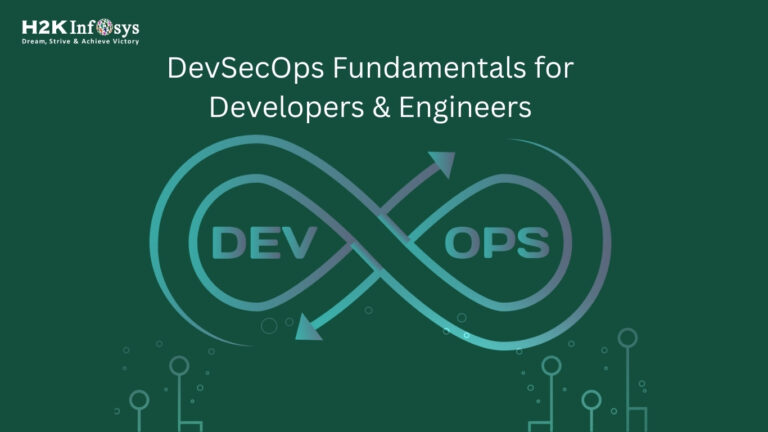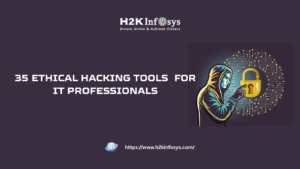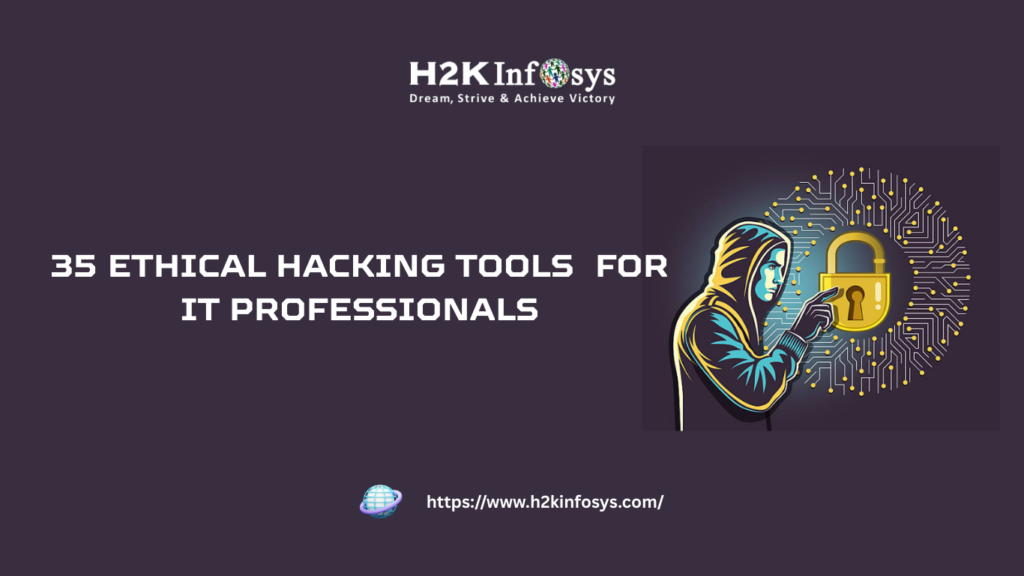Introduction: Why Developers and Engineers Must Master DevSecOps Fundamentals
Today’s software development is not just about writing code it’s about writing secure code. In an era where data breaches and cyberattacks dominate headlines, companies can no longer afford to treat security as an afterthought. That’s why DevSecOps Fundamentals are no longer optional they’re essential.
Whether you’re a software engineer, DevOps practitioner, or cloud architect, understanding the core principles of DevSecOps helps you design, build, and deploy applications that are both high-performing and secure.
In this blog, we break down DevSecOps Fundamentals for developers and engineers, explore career-relevant DevSecOps Courses, and discuss how DevSecOps Training and Certification like the DevSecOps Certification AWS can elevate your skill set.
What Are DevSecOps Fundamentals?
DevSecOps stands for Development, Security, and Operations. It integrates security practices within the DevOps process. The goal? To make security a shared responsibility throughout the software lifecycle.
Key DevSecOps Fundamentals:
- Shift Left Security: Incorporating security earlier in the development cycle.
- Continuous Security Testing: Automating security tests in CI/CD pipelines.
- Threat Modeling: Identifying potential vulnerabilities during the planning phase.
- Code Analysis: Static and dynamic analysis to identify security flaws.
- Security as Code: Using automated tools and infrastructure as code (IaC) to manage security policies.
- Compliance Monitoring: Ensuring code meets regulatory and organizational standards.
By mastering DevSecOps Fundamentals, teams can detect vulnerabilities earlier, reduce costs, and deploy faster without compromising safety.
The Developer’s Role in DevSecOps
Traditionally, developers built code while security was the job of a separate team. That model is outdated. In modern pipelines, developers are the first line of defense.
Here’s how DevSecOps Fundamentals impact developers:
- Secure Coding Practices: Writing code that is resilient to SQL injections, XSS, and CSRF attacks.
- Automated Unit & Security Tests: Embedding security validation into unit tests.
- Tool Integration: Leveraging tools like SonarQube, Checkmarx, and Snyk in the CI/CD pipeline.
- Continuous Learning: Staying updated with the latest CVEs (Common Vulnerabilities and Exposures).
Understanding DevSecOps Fundamentals empowers developers to build with security in mind from the start.
The Engineer’s Role in DevSecOps
Engineers especially cloud and DevOps engineers are vital in enforcing DevSecOps practices through automation and infrastructure control.
Key Engineering Responsibilities in DevSecOps Fundamentals:
- Secure Infrastructure Provisioning: Using IaC tools like Terraform with embedded security policies.
- CI/CD Pipeline Security: Integrating security checkpoints and secrets management in pipelines.
- Container Security: Scanning Docker images and enforcing runtime policies using tools like Aqua Security or Falco.
- Monitoring and Logging: Implementing real-time alerts for suspicious activity.
By applying DevSecOps Fundamentals, engineers create an environment that minimizes security risks without slowing down delivery.
Why DevSecOps Training and Certification Matters
Whether you’re starting out or advancing in your tech career, DevSecOps Training and Certification adds tangible value to your profile.
Benefits of DevSecOps Online Training:
- Hands-On Labs: Practice threat modeling, vulnerability scanning, and pipeline security in real-world simulations.
- Career Boost: Opens doors to roles like DevSecOps Engineer, Security Architect, and SRE.
- Validation of Skills: Proves your capability to integrate security into the DevOps lifecycle.
At H2KInfosys, our DevSecOps Certification Course is designed to cover DevSecOps Fundamentals with real-world use cases and expert mentorship.
Real-World Example: DevSecOps in Action
Let’s take an example of a fintech company launching a digital wallet app. Here’s how DevSecOps Fundamentals streamline the process:
- Developers write code and run static analysis using SonarQube.
- A CI/CD pipeline kicks off, where dynamic tests validate security.
- Containers are built and scanned for vulnerabilities using Trivy.
- Infrastructure is deployed via Terraform with security modules.
- A WAF (Web Application Firewall) and runtime protection tools like Aqua monitor the app.
All of this happens automatically because the team was trained in DevSecOps Fundamentals and adopted the right tools and practices.
Tools That Support DevSecOps Fundamentals
Mastering DevSecOps Fundamentals also means knowing your tools. Here’s a list developers and engineers should get familiar with:
| Tool | Purpose |
|---|---|
| SonarQube | Static code analysis |
| Snyk | Dependency vulnerability scanning |
| Checkmarx | Source code security testing |
| Terraform | Infrastructure as Code with policy as code support |
| Jenkins/GitLab | CI/CD pipeline management |
| Aqua Security | Container runtime protection |
| Trivy | Container image vulnerability scanning |
These tools support DevSecOps Online Training and help professionals gain practical experience.
AWS and DevSecOps: A Powerful Combination
Cloud platforms like AWS are central to modern DevSecOps pipelines. That’s why DevSecOps Certification AWS is gaining traction.
What Does AWS DevSecOps Certification Cover?
- IAM Policies and Identity Federation
- Security in VPC and Networking
- AWS Inspector and GuardDuty
- Secrets Manager Integration
- Security Best Practices in Lambda, EC2, and S3
This DevSecOps Certification Course teaches how to automate security across AWS services while reinforcing DevSecOps Fundamentals.
Step-by-Step DevSecOps Pipeline Example
Here’s a simplified view of what a DevSecOps pipeline might look like:
- Code Commit: Developer pushes code to Git.
- Build Stage: Jenkins runs build + static analysis (SonarQube).
- Test Stage: Unit tests + dynamic security tests.
- Scan Stage: Container image scanned using Trivy.
- Deploy Stage: Terraform provisions cloud infrastructure.
- Monitor: Prometheus + Aqua monitor runtime behavior.
Each step enforces DevSecOps Fundamentals, reducing the chance of vulnerabilities reaching production.
Common Challenges in DevSecOps Adoption
Adopting DevSecOps Fundamentals is not without hurdles:
- Lack of Security Awareness: Teams unaware of security basics.
- Tool Overload: Too many tools, no integration.
- Resistance to Change: Teams hesitant to modify established DevOps workflows.
- Skill Gaps: Developers and engineers not trained in security.
The solution? Structured DevSecOps Online Training that provides practical exposure and certification backed confidence.
How H2KInfosys Bridges the Skill Gap
At H2KInfosys, our DevSecOps Courses are tailored for real-world readiness:
- Hands-On Training using current DevSecOps tools
- Live Projects focused on cloud-native environments
- Expert Mentors from top-tier companies
- Job-Oriented Curriculum aligned with market demand
- DevSecOps Certification Course pathways including AWS-specific modules
All courses are designed with DevSecOps Fundamentals at the core, ensuring learners gain actionable skills.
Key Takeaways
Here’s a quick summary of what we covered:
- DevSecOps Fundamentals involve integrating security throughout the DevOps lifecycle.
- Developers and engineers play critical roles in implementing these practices.
- Real-world tools and AWS integrations enhance pipeline security.
- Structured DevSecOps Training and Certification prepares professionals for in-demand roles.
- H2KInfosys offers comprehensive DevSecOps Online Training with expert guidance.
Conclusion: Take Your DevSecOps Skills to the Next Level
Want to secure your future in software development and cloud engineering?
Enroll in H2KInfosys’ DevSecOps Certification Course today and master the DevSecOps Fundamentals that the industry demands.



























